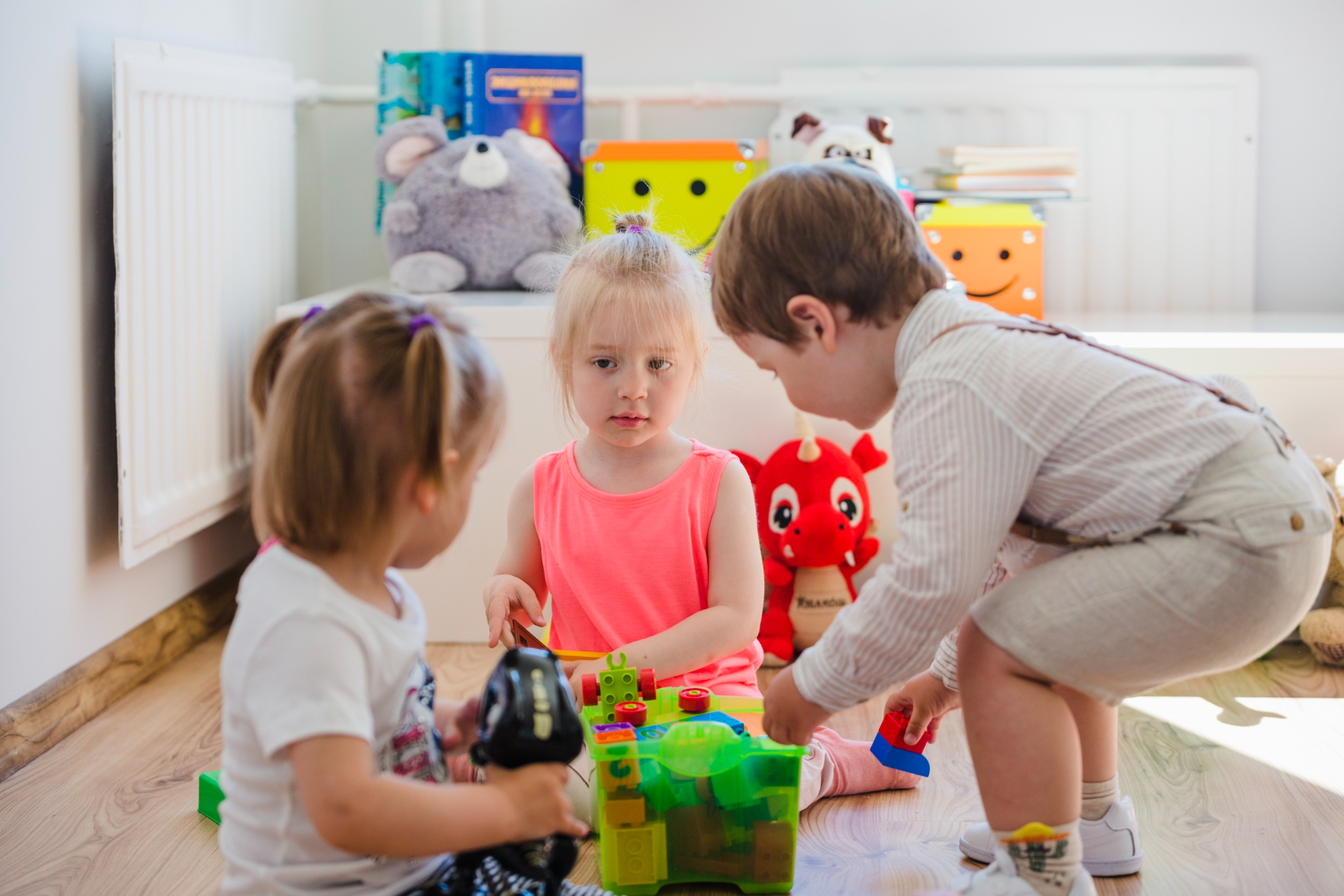The Power of Pretend Play for Children with Autism
In childhood, a magical space exists where reality blurs with imagination, giving rise to a crucial facet of development known as pretend play. Defined as the act of imagining and acting out scenarios that are not real, pretend play is more than just a fun pastime for children. Rather, it is a vital component in fostering cognitive growth and shaping the very foundation of their minds.
For children with Autism Spectrum Disorder (ASD), pretend play is more than just a source of entertainment — it is a dynamic force that nurtures various cognitive abilities. From enhancing problem-solving skills to promoting emotional intelligence, the importance of pretend play in their cognitive development is immeasurable. Let’s explore how pretend play in autism lays the groundwork for a resilient mind, and how you can help with early intervention.
The Significance of Pretend Play in Cognitive Development
Pretend play molds cognitive abilities with every scenario enacted, and it usually occurs in the stages of preoccupational thinking. By this stage of childhood development (ages 2-7), kids have often honed their sensorimotor functions and begin to demonstrate the capacity for representational thought — an ability to recognize and use symbols to represent something else.
When children immerse themselves in make-believe worlds, the impact on their cognitive development is profound, influencing key skills that pave the way for future success.
Imagination and Creativity
At the heart of pretend play is the spark of imagination and creativity. When children engage in activities (i.e. becoming characters, embarking on fantastical adventures, or transforming everyday objects into something else), they are actively exercising their imaginative potential. This not only fuels their sense of self-expression but also lays the foundation for abstract thinking — a skill crucial in various academic and real-world contexts.
When children act out new roles, scenarios, and worlds during pretend play, they learn to think beyond boundaries. During this time, young children foster creativity that transcends traditional problem-solving. Pretend play nurtures their capacity to generate new ideas in addition to equipping them with the ability to approach challenges from unique perspectives.
Problem-solving Abilities
Through pretend play, problem-solving abilities come to life. Whether navigating through a jungle, running a bakery, or rescuing stuffed animals from danger, children are confronted with challenges that require quick thinking and decision-making. This process sharpens their problem-solving skills as they strategize and adapt to dynamic, ever-changing circumstances within the realm of their imagination.
Resolving issues within the context of pretend play also translates directly into the real world. The skills used in these imaginative scenarios (critical thinking and resourcefulness) later become useful in academic pursuits and professional life.
Social and Emotional Development
The dynamics of pretend play provide a rich environment for developing crucial social and emotional skills. When children engage in role-playing, they learn to understand and navigate the perspectives of others. Negotiating roles, sharing responsibilities, and cooperating in the make-believe world all contribute to the development of interpersonal skills.
Moreover, pretend play is a safe space for children to explore a wide range of emotions. Whether portraying a character experiencing joy, frustration, or sadness, children learn to recognize and manage their emotions. This emotional intelligence lays a solid foundation for healthy relationships as we as effective communication in the future.
Language and Communication Skills
Children engage in dialogue, negotiate roles, and articulate their thoughts or feelings within the context of their imaginative play. This process not only enhances their vocabulary but also refines their ability to communicate effectively with others.
Through the creation of narratives, children develop a deeper understanding of language structures, grammar, and the nuances of communication. As they give voice to their characters, they build the linguistic foundation that is vital for lifelong communication.
Impact of Autism Spectrum Disorder (ASD) on Pretend Play
Navigating the world of pretend play can be a complex journey for children, especially those living with ASD. Because is it a cornerstone of typical cognitive development, pretend play with autism can present a significant challenge.
Difficulty with Social Interaction
In the context of pretend play, one of the biggest challenges for children with ASD is difficulty with social interactions. Pretend play often involves social dynamics, requiring children to understand roles, take turns, and engage in reciprocated communication. For children with ASD, the collaborative nature of pretend play can pose significant hurdles.
Non-verbal communication can also be integral to pretend play, such as shared gazes, gestures, and facial expressions. However, those with ASD may struggle in this respect, making it harder to align their actions with other playmates. The result might be isolation or even rejection during playtime, which is why understanding these interaction challenges is crucial for inclusive environments.
Sensory Sensitivities
Many children with ASD experience heightened sensitivities or aversions to sensory stimuli, such as textures, sounds, or lights. The imaginative scenarios of pretend play often involve exposure to a variety of sensory inputs, and for children with ASD, these can be overwhelming or distressing.
Even the simple act of wearing a costume may trigger discomfort due to sensory issues. Including sensory activities is essential for children with ASD to be comfortable in their environment. Adaptations that consider sensory profiles (i.e. providing sensory-friendly props or adjusting the play environment) can greatly enhance the accessibility of pretend play for autistic children.
Literal Thinking Patterns
Another distinctive challenge arises from the literal thinking patterns often associated with ASD. Pretend play relies on the ability to engage in symbolic thinking, where an object or action represents something other than its literal meaning. Children with ASD may exhibit a preference for concrete and literal interpretations. As such, the symbolic nature of pretend play can be demanding.
In scenarios where a box becomes a spaceship or a blanket transforms into a superhero cape, children with ASD can struggle to embrace the abstract nature of these transformations. This highlights the importance of incorporating more concrete elements into pretend play activities, gradually introducing symbolic play in a supportive manner.
Pretend Play Ideas for Autism: Strategies and Adjustments

Children face unique challenges when navigating the world of pretend play and autism. But with thoughtful strategies, you can create an inclusive environment that fosters their participation and enjoyment.
Providing Structured Play Opportunities
Structured play environments can offer a sense of predictability and security for children with ASD. Implementing clear guidelines during pretend play helps them understand expectations while reducing anxiety. Creating designated play spaces with visual cues or boundaries can further enhance playtime, providing a framework within which children with ASD can comfortably explore their imagination.
Utilizing Visual Supports
Visual supports, such as schedules, social stories, or visual prompts, can serve as invaluable tools to enhance pretend play with autism. For instance, you may apply visual aids to illustrate play activities or to introduce new play concepts. This can provide clarity while supporting a smoother transition into imaginative scenarios.
Allowing for Flexible Play Styles
Recognizing and respecting diverse play styles is essential when working with children with ASD. While some may prefer solo play, others can thrive in small group settings. Offering a range of play options and respecting individual preferences ensures that children with ASD can choose the style that aligns with their comfort level. Flexibility in play styles accommodates the varied needs of children with ASD, promoting a positive, inclusive environment.
Gradual Exposure and Desensitization
For children who experience sensory challenges, desensitization techniques can be instrumental for pretend play with autism. Begin by introducing play elements gradually, allowing children to acclimate to new sensory experiences at their own pace. This method can help reduce anxiety and increase comfort during playtime. Eventually, children with ASD will build confidence and gradually expand their engagement in pretend play activities.
Tools and Resources for Supporting Pretend Play in Children with ASD
Children with ASD thrive when provided with resources that cater to their unique needs. Pretend play can be facilitated through a variety of adaptive tools, assistive technology, and community support, including:
- Specially designed play sets often feature adaptive elements such as textured surfaces, easy-to-grip handles, and simplified interfaces. From kitchen sets to tool kits, these adaptive toys provide a supportive method for children to explore their creativity.
- Sensory-friendly costumes and props, such as clothing made from soft, non-irritating material or props designed with sensory engagement in mind.
- Interactive storytelling apps, tailored to the specific needs of children with ASD. They provide a dynamic platform for imaginative exploration and can incorporate visual support, interactive elements, and customization.
- Augmented reality (AR) tools, can overlay digital elements in the real world, enhancing the child's perception and interaction with their surroundings. This innovative approach bridges the gap between the physical and digital realms, assisting with representational thought and providing an enriching experience.
- Online communities and forums, where platforms provide a space for sharing experiences, seeking advice, and discovering resources related to pretend play for autism. Engaging with other caregivers facing similar challenges can foster a sense of community while offering collective wisdom.
- Local support groups and workshops are tailored for caregivers to gain hands-on knowledge and practical strategies for supporting pretend play. These events provide a platform to connect with professionals, share success stories, and learn about community resources.
From adaptive toys to interactive apps, these resources contribute to creating a nurturing and inclusive environment for children with ASD. By embracing these tools, the full potential of imaginative play for every child can be unlocked.
Support Pretend Play with ECCM!
We provide tailored interventions based on your child’s unique needs, fostering a safe environment for them to learn and grow. Contact us today to get started!

